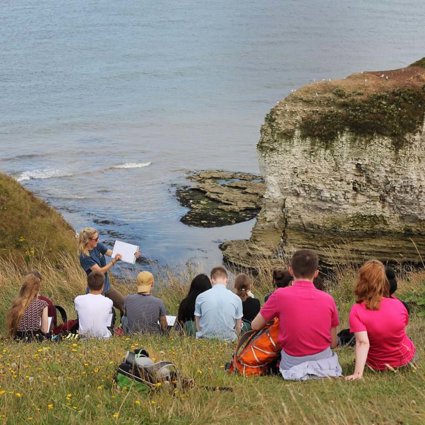
Review of the A Level NEA
Back in 2013/2014, the geography teachers at The Bulmershe School, Wokingham faced the dread of something new and complex: the re-introduction of A Level coursework (The Non-Examined Assessment - NEA). Either we were going to resign, retire or face the challenge. Thankfully the latter path prevailed and we have come through this challenge and culminated in hosting a Consortium INSET Day for all the geography teachers in our Local Authority where much of the focus was sharing NEA practice. This article comes out of our training day and is an attempt to share our approach and what we have learnt from the first cycle of the new A Level NEA arrangements. Our first cycle was when the school was offering an A/S pathway and, having moved to a linear pattern in September 2018, our plan has been robust and only required minimal adjustment.
The school follows AQA and our first hurdle was solving how we would include four compulsory fieldwork days in a school without a strong residential tradition (and the requirement doesn't specify that the fieldwork needs to be residential). We opted for a two day of fieldwork pattern in our local area run by our team of geography teachers: Newbury for Changing Places fieldwork and Henley-on-Thames for water/carbon and urban topics. This is to prepare the students to produce a pilot fieldwork investigation and is backed up by the teaching of the required fieldwork skills in school. In order to fulfil the NEA requirements, we have built up a relationship with Calshot Activity Centre, Hampshire, and our students visit the centre in the last week of Year 12 for three days, thereby completing the four day total requirement.
From May onwards in Year 12, students are prepared for their residential by class based activities giving them geographical knowledge of the field location (using maps, GIS, journals, articles, internet research, Shoreline Management Plans etc.), culminating in the students producing their main title for their investigations and associated sub-questions before going on the fieldwork. We also invite the Year 13 students to share their NEA experiences with the Year 12 set. All the students are required to complete their NEA within a common study area in Christchurch Bay, stretching from Christchurch in the West to Calshot in the East. There are a range of physical and human studies. We have not therefore had to deal with complex travel arrangements in the field, with students focused on different study areas. This arrangement also allows us to facilitate students working collaboratively and have both primary and secondary data sets.
We send a letter to parents/carers at the end of Year 12, before the summer break to ensure all students are fully involved. This lays out deadlines, expectations and support available for parents/carers, students and teachers. Once students have started Year 13, lessons are set aside for teaching the technique to be followed and we closely use the RGS-IBG NEA support booklet, with each student having their own copy to back up what is covered in lessons.
To aid them with their literature review and the development of a credible bibliography, all students are given an opportunity to visit the University of Reading, where they meet a member of the academic staff and experience how journals and periodicals can be accessed in higher education and then spend time finding specific resources for their areas of study. Our deadline for NEA completion is the week after the October half-term and in the final lessons students are given support to peer assess their work and we attach the peer assessment paperwork we have developed, which is based on a 'student friendly' interpretation of the Mark Scheme.
After scripts have been collected, each is marked by two geography teachers who have been involved in delivering the course. Also other teachers in the Geography Department have assisted even though they currently do not teach the NEA module, so that all members of staff in the department have experience of assessing the NEA. Once marked, to aid the moderation process, scripts were also shared with a nearby school doing the same syllabus. This gave another check on grading and also an opportunity to share good practice of the NEA in the first cycle.
Once marked, we give 1:1 feedback to each student and keep a checklist of what areas students achieve good levels of progress and where they experience difficulties and this aids our planning and delivery of the NEA for the forthcoming year and following cohort.
This is our perspective and what we have learned so far from the process and we felt happy that in the first round none of our assessments were amended by the Examination Board.
Di Williams and Andrew Linnell, Geography Teachers, The Bulmershe School
File nameFiles
File type
Size
Download